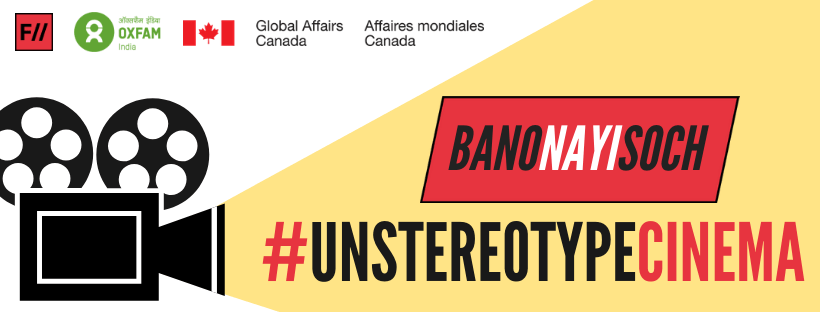In 2018, we partnered with Oxfam India to #UnstereotypeCinema, a campaign aimed at revealing the gender stereotypes rife in Indian cinema, and deconstructing our problematic faves. Cinema is one of our earliest confrontations with gender roles and stereotypes, and they have a massive impact on our understandings of romance, gender and desire. It is unfortunate then, that Indian cinema reinforces patriarchy at every turn, from the way it objectifies women to the sexist language it uses to the toxic forms of love it glorifies. These values are then so ingrained in us that they are normalized, a process that happens so subtly that we hardly realize it. It is important to call out cinema for its problematic elements, so we can break out of the normalization of its toxic elements and recognize their toxicity.
Based on a study by Oxfam India, FII created a series of four short videos, focusing on different aspects of Indian cinema (albeit very briefly), and how they reinforce patriarchy in various forms.
1. Are Item Songs Tools For Harassment?
Much has been written about item songs – a brief look at them will show us that women have been compared to all kinds of objects – jalebis, kababs, cars and chickens. Item songs often depict a group of men pawing at the heroine, a thinly veiled allusion to mass molestation or gang rape. Most item songs reinforce the view that women are objects created for male satisfaction, with their videos making no pretense at being catered to anything but the male gaze.
2. Sexist Humour In Indian Cinema
Indian cinema constantly uses the violation of women as the punchline of its jokes. Comic background scores often accompany scenes of consent violation, assault or voyeurism, while rape and sexist stereotypes like women being annoying are often the punchline of jokes. Every time we watch a scene where a woman is violated on screen in order to get a few laughs, we are contributing to the normalization of violence. We contribute to a world where violence against women is seen as a joke, and not taken seriously.
3. Is The Way Cinema Portrays Romance Problematic?
Indian cinematic romance is replete with instances of emotional manipulation and gaslighting, undermining women’s worth and treating women’s desire as irrelevant, as well as the most explicit cases of stalking and victim-blaming. In all of these cases however, cinema shows us the happily ever after we yearn for, thus twisting our ideas of what constitutes love and romance.
4. Why Are Women’s Costumes In Cinema So Sexualized?
Women in cinema are always seen in highly sexualised clothing – no matter what the situation is. While wearing sexy clothing is fine, is it realistic to assume that women are constantly wearing skimpy attire – especially in professional or family situations? As for women in action roles, costumes are designed to accentuate their bodies as opposed to provide functional or utilitarian support – do superheroes really need corsets? Costume design can provide a glaring insight into the larger objectification of women in cinema.
What other issues in Indian cinema do you think are problematic? Tell us in the comments below!
About the author(s)
Feminism In India is an award-winning digital intersectional feminist media organisation to learn, educate and develop a feminist sensibility and unravel the F-word among the youth in India.




